Resources to Support the Patient Pathway
Patient Screening and Sleep Testing
Background and Prevalence of Sleep Disordered Breathing
Central Sleep Apnea (CSA) is much more prevalent in cardiovascular patient populations.1 Sleep Disordered Breathing (SDB) is the most common comorbid condition in patients with heart failure (HF), as nearly threequarters of all heart failure patients have some form of SDB. It is estimated that half of those suffer from predominantly Central Sleep Apnea.1 CSA is associated with a two-fold increase of both HF hospitalizations and mortality among HF patients and can cause symptoms that resemble those commonly associated with HF.2-4 SDB is also prevalent in patients with Atrial Fibrillation (AF), with an estimated 74% of patients with AF having some form of SDB.5 CSA is associated with a 2- or 3-fold increase in risk of developing AF.6
WATCH: Treating Sleep Apnea in Cardiology Patients
WATCH: Sleep Apnea in Atrial Fibrillation
Opportunities for Screening in
Cardiovascular Settings Include:
- Initial heart failure consultation visits
- Post discharge clinic visits following HF-related hospitalization
- Atrial Fibrillation patients prior to ablation procedures
- Cardiac device patients with documented Implantable
Cardiac Defibrillator (ICD) shocks or arrhythmias
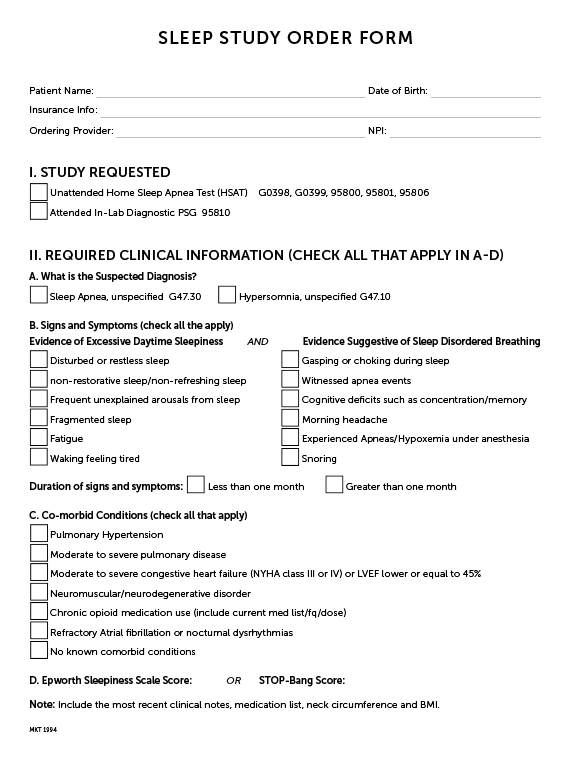
Download the Sleep Testing Order Template
Pre-Screening Questionnaires
Patients with CSA often do not display common symptoms associated with SDB such as snoring and daytime sleepiness.7 Common pre-screening questionnaires have not been validated in CSA and can fail to identify these patients, but can help identify risk factors for and symptoms of SDB, as patients with CSA often do not display common symptoms such as snoring and daytime sleepiness.7,8 Literature suggests that STOP-BANG scoring of ≥ 3 or Epworth Sleepiness Scale of ≥ 8 may be more reliable for detecting SDB in patients with cardiovascular diseases.9 More general questions to assess HF patients for symptoms of excessive daytime fatigue, observed >apneas, nocturnal dyspnea and impaired cognition may more accurately identify patients who need further screening for sleep apnea.10
Sleep Testing Decision Tree Example
Tools for Screening for Sleep Apnea
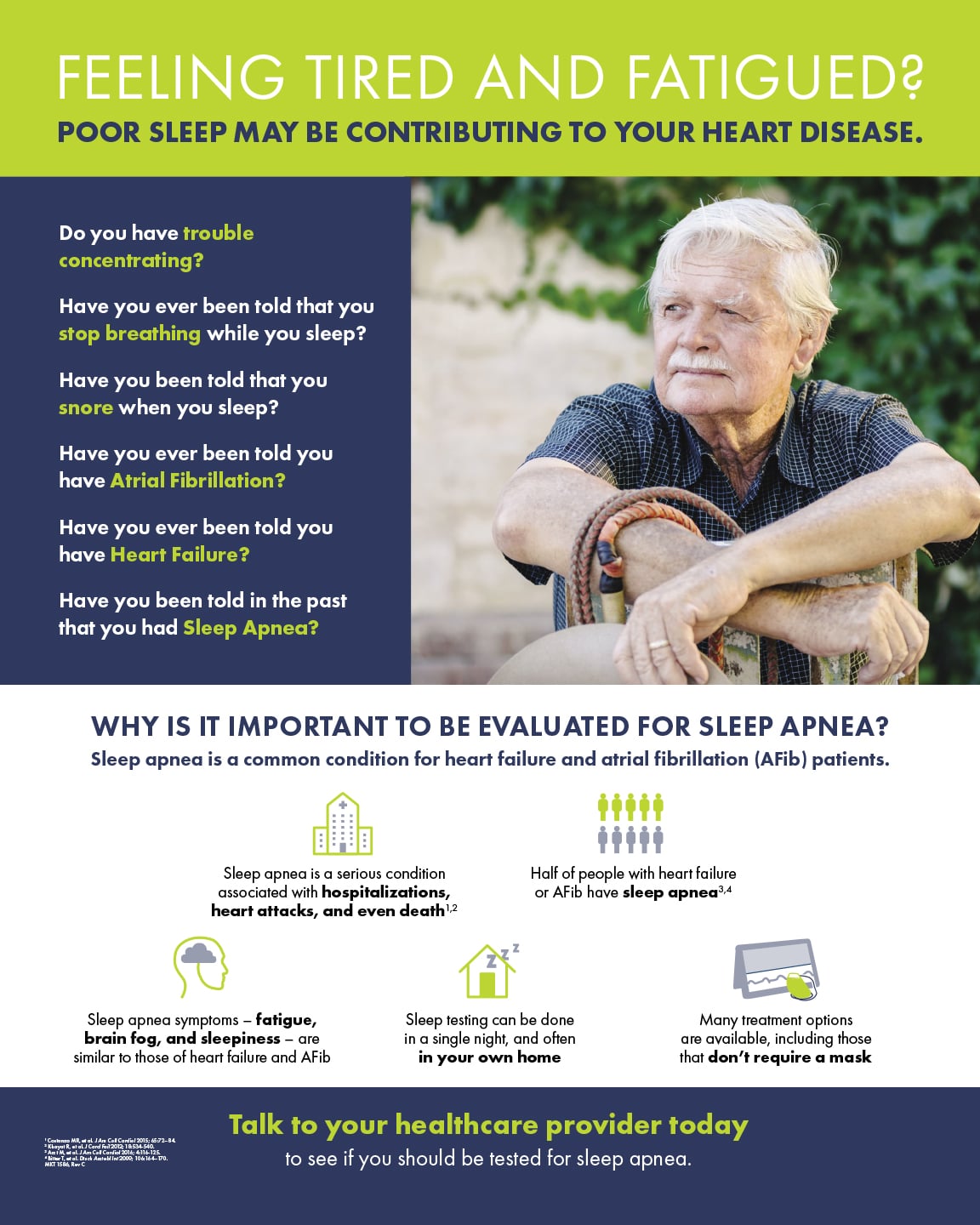
Screening poster for clinics are available framed or as an 8.5” x 11” foam core easel
Contact your remedē
representative to order.
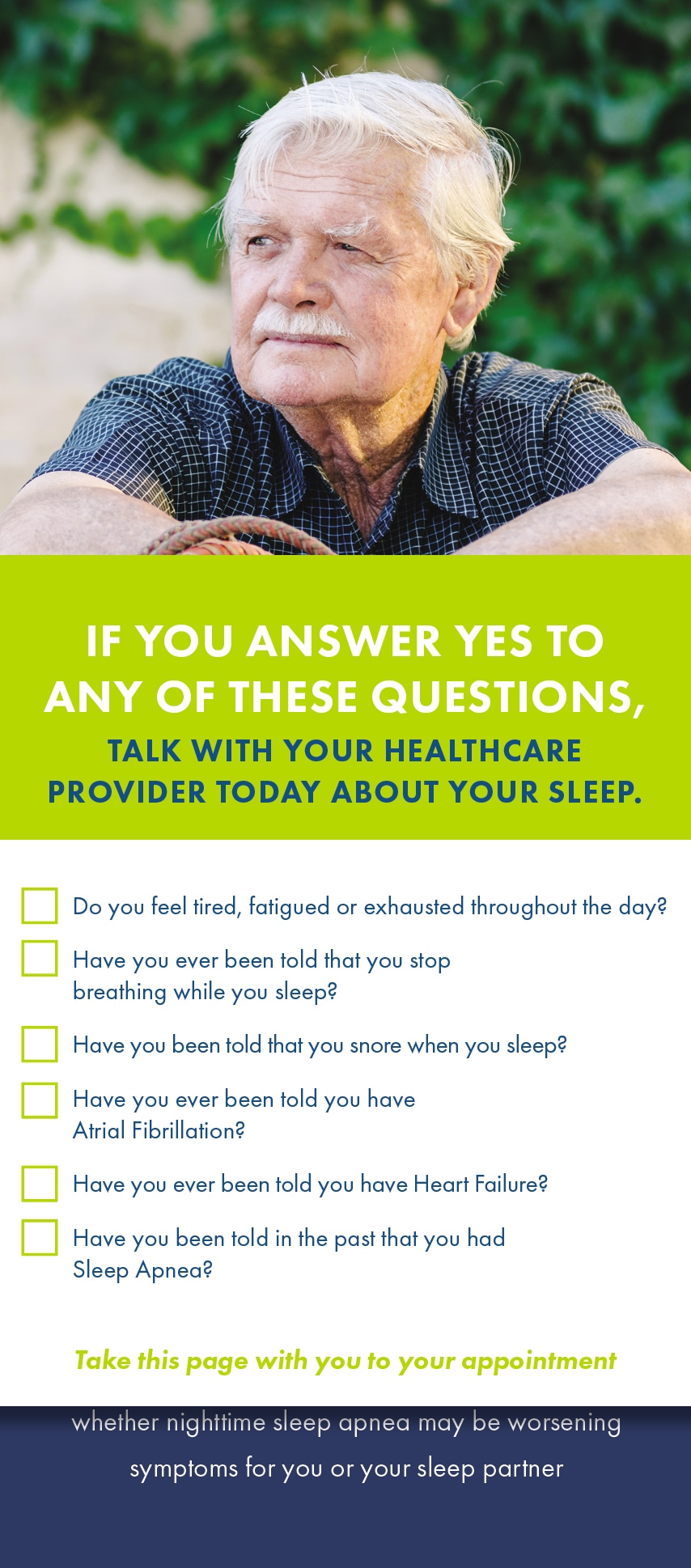
Patient brochures for screening and education are available
Contact your remedē
representative to order.
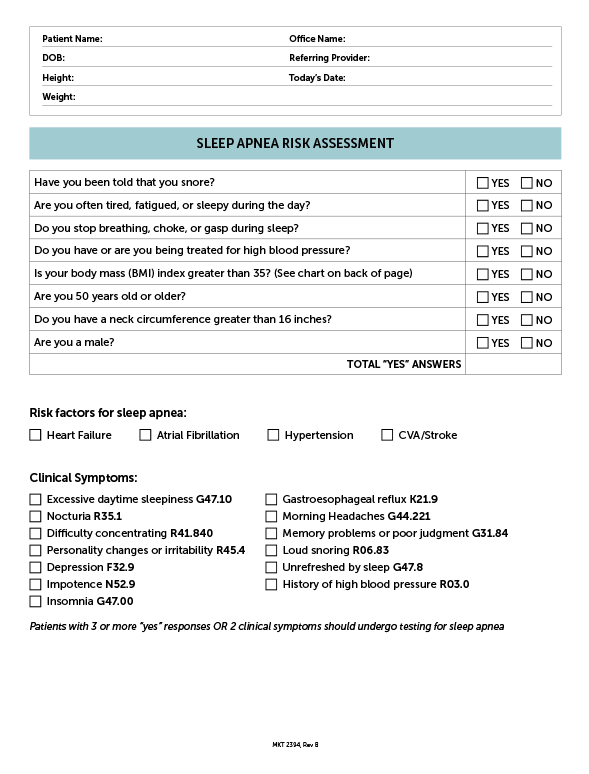
Sleep apnea risk assessment form
Or contact your remedē
representative to order
tear-off pads.
Resources for Screening for Sleep Apnea
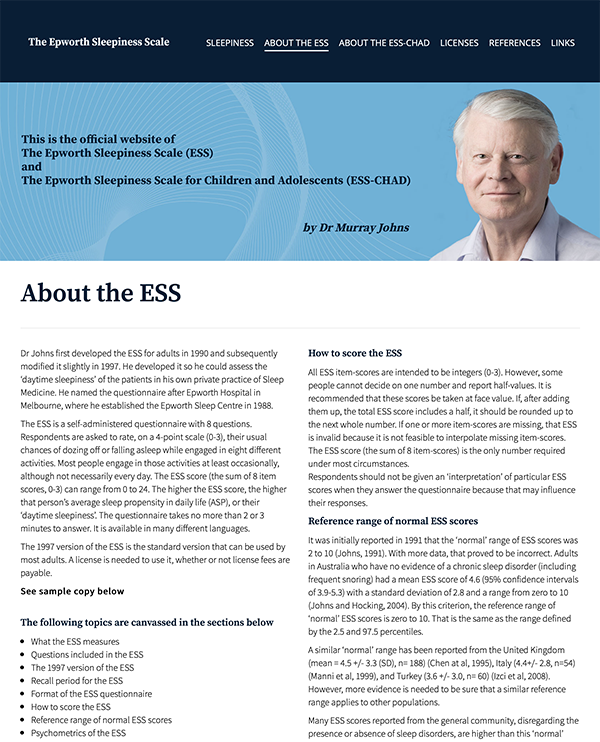
Epworth Sleepiness Scale
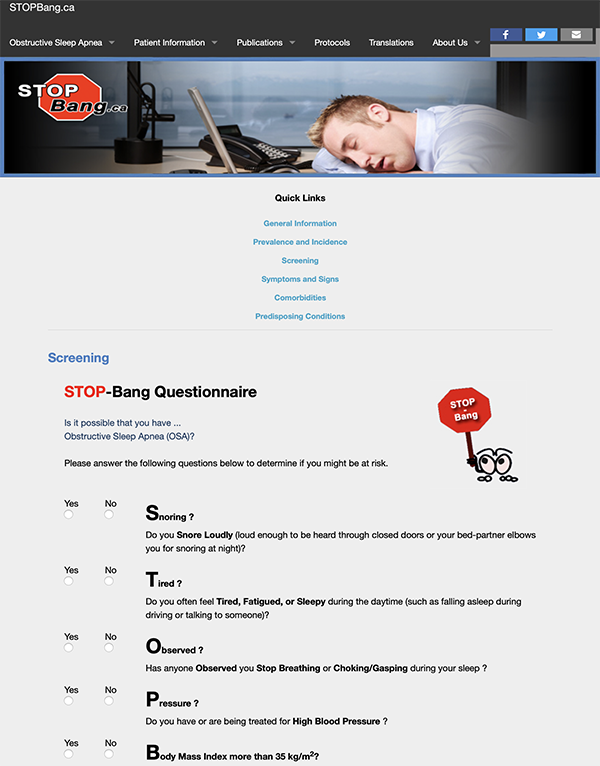
STOP-Bang Questionnaire
These links are provided as a convenience to identify resources that may be useful in your practice. No rights to use the materials found at these links is granted or implied. Please secure permission to use questionnaires or other materials from the copyright owners.
- Oldenburg, O, Lamp, B, Faber, L, Teschler, H, Horstkotte, D, Töpfer, V. Sleep-Disordered Breathing in Patients with Symptomatic Heart Failure. A Contemporary Study of Prevalence in and Characteristics Of 700 Patients. Eur J Heart Fail. 2007; 9(3):251-7.
- Khayat, RN, Abraham, WT, Patt, B, Brinkman, V, Wannemacher, J, Porter, K, Jarjoura, D. Central Sleep Apnea is a Predictor of Cardiac Readmission in Hospitalized Patients with Systolic Heart Failure J Card Fail. 2012; 18(7): 534–540.
- Khayat, RN, Jarjoura, D, Porter, K, Sow, A, Wannemacher, J, Dohar, R, Pleister, A, Abraham, WT. Sleep Disordered Breathing and Post-Discharge Mortality in Patients with Acute Heart Failure. European Heart Journal. 2015; 36, 1463–1469.
- Artz, M, Woehrle, H, Oldenburg, O, Graml, A, Suling, A, Erdmann, E, Teschler, H, Wegscheider, K. Prevalence and Predictors of Sleep-Disordered Breathing in Patients with Stable Chronic Heart Failure. The SchlaHF Registry. JACC: Heart Failure. 2016; 4(2): 1 1 6–2 5.
- Kadhim, K, Middeldorp, ME, Elliott, AD, Jones, D, Hendriks, JML, Gallagher, C, Artz, M, McEvoy, RD, Antic, NA, Mahajan, R, Lau, DH, Nalliah, C, Kalman, JM, Sanders, P, Linz, D. Self-Reported Daytime Sleepiness and Sleep-Disordered Breathing in Patients with Atrial Fibrillation: SNOozE-AF. Can J Cardiol. 2019; 35: 1457-1464.
- Tung, P, Levitzky, YS, Wang, R, Weng, J, Quan, SF, Gottlieb, DJ, Rueschman, M, Punjabi, NM, Mehra, R, Bertisch, S, Benjamin, EJ. Obstructive and Central Sleep Apnea and the Risk of Incident Atrial Fibrillation in a Community Cohort of Men and Women. J Am Heart Assoc. 2017; 6(7). pii: e004500. doi: 10.1161/JAHA.116.004500.
- Gupta, A, Quan SF, Oldenburg, O, Malhotra, A, Sharma, S. Sleep-Disordered Breathing in Hospitalized Patients with Congestive Heart Failure: A Concise Review and Proposed Algorithm. Heart Fail Rev. 2018; 23(5): 701–709.
- Reuter, H, Herkenrath, S, Trem, M, Halbach, M, Steven, D, Frank, K, Castrogiovanni, A, Kietzmann, I, Baldus, S, Randerath, WJ. Sleep-Disordered Breathing in Patients with Cardiovascular Diseases Cannot Be Detected By ESS, STOP-BANG, and Berlin Questionnaires. Clinical Research in Cardiology. 2018; 107:1071–1078.
- Labarca, G, Valdivia, G, Oňate, A, Navarrente, C, Araya, J, Fernandez-Bussy, I, Dreyse, J, Jorquera, J. Prevalence Of STOP BANG Questionnaire and Association with Major Cardiovascular Events In Hospitalized Population: Is It Enough With Currently Used Cardiovascular Risk Measurements? Sleep Medicine. 2019; 61: 82-7.
- Kahwash, R, Khayat, RN. A Practical Approach to the Identification and Management of Sleep-Disordered Breathing in Heart Failure Patients. Sleep Med Clin. 2017; 12: 205–219.

